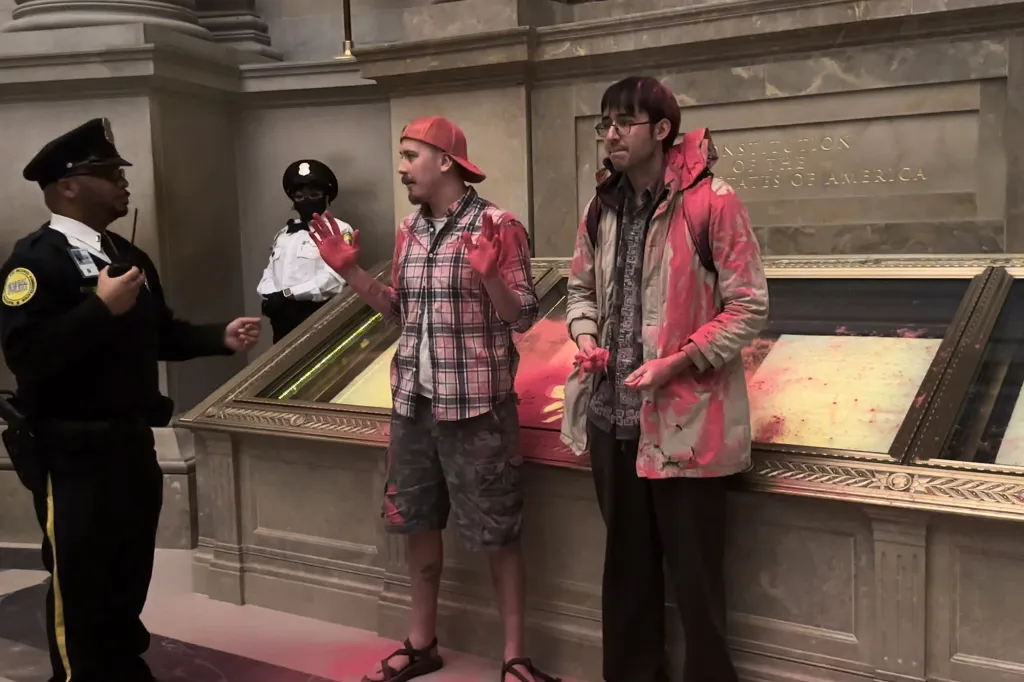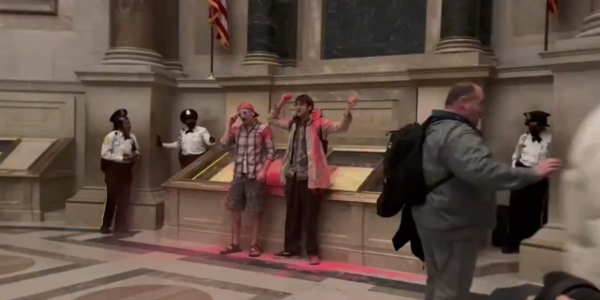On Wednesday, the National Archives encountered a temporary closure due to the actions of two climate change activists who staged a protest by sprinkling red powder on the display case housing the U.S. Constitution.
The incident unfolded around 2:30 pm, prompting swift intervention from security personnel who detained the protestors involved. Fortunately, the National Archives confirmed in a press release that the Constitution itself remained physically unharmed. However, attention has turned to assessing any potential damage caused to the Rotunda, where the revered document is showcased.
“The Constitution remained undamaged within its enclosure. There was no harm inflicted upon the document,” clarified the National Archives. “Our conservators were immediately on the scene and are currently conducting a comprehensive assessment of the Rotunda’s condition. As a result, the Rotunda will remain closed for cleaning on Thursday, February 15, while the rest of the National Archives Building will continue to operate on its regular schedule.”

Climate Activists Defile US Constitution Display Case with Pink Powder: JOBOB Incident (Credits: New York Post)
Video footage captured the protestors, affiliated with the climate change advocacy group Declare Emergency, delivering a rehearsed speech while attempting to deface the Constitution.
“We are resolute in our determination to spark change,” one individual stated in the video. “Every individual deserves access to clean air, water, sustenance, and a hospitable climate.”
Dr. Colleen Shogan, the Archivist of the United States, emphasized the National Archives’ staunch stance against vandalism, affirming their commitment to pursuing legal action against the perpetrators.
This incident adds to a series of recent acts of public vandalism targeting historical artifacts and artworks over the past year. Previous occurrences have witnessed protestors defacing renowned pieces such as the Mona Lisa and a painting by Monet, all purportedly in the name of climate change activism.
However, such acts of vandalism are widely criticized for their failure to advance any political agenda and instead are viewed as disrespectful towards cherished historical documents and artistic masterpieces.
Originally published by TPUSA, this article underscores the ongoing challenge of protecting cultural heritage amidst contemporary social and political movements.























